#lobivia
Photo
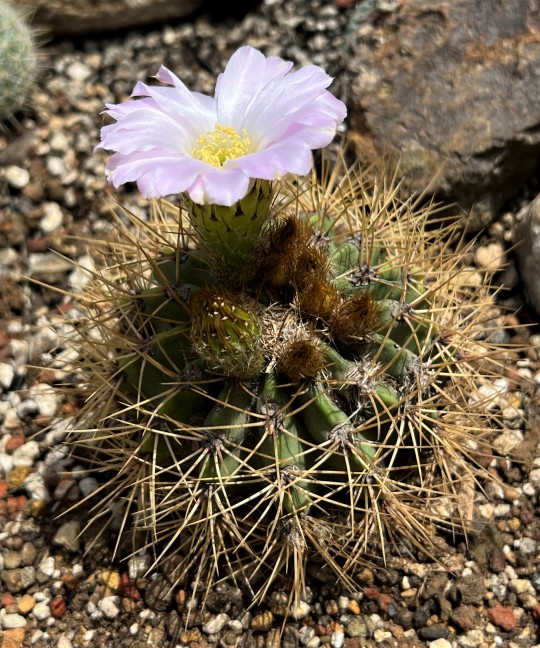

Acanthocalycium spiniflorum
This is another of the South American cactus genera lumped for a time into Echinopsis, and there is disagreement on how it should properly be classified. Cactus authority David Hunt thought it should be placed within Lobivia, to which it is clearly related, but Joel Lode insists that there are good grounds for keeping it as a separate genus. An obvious difference from Lobivia is the spiny outside of the flower, and the name “acathocalycium” (= spiny calyx) refers to this. However it is classified, this is a charming species from Argentina with very pale pink flowers.
-Brian
56 notes
·
View notes
Video
youtube
Lobivia hertrichiana, gorgeous red flowers!
I bought this plant on eBay like a few years ago and it has since doubled in size again. It was already big when I got it and it´s flowering all summer long. It's a bit sensitive to mealy bugs, but I got it under control.
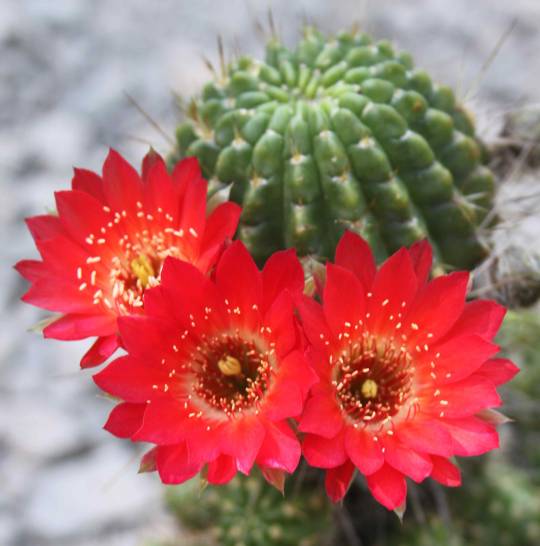
#youtube#cactus#cacti#plants#plant#Lobivia#Echinopsis#garden#gardening#Lobivia hertrichiana#succulents
2 notes
·
View notes
Photo
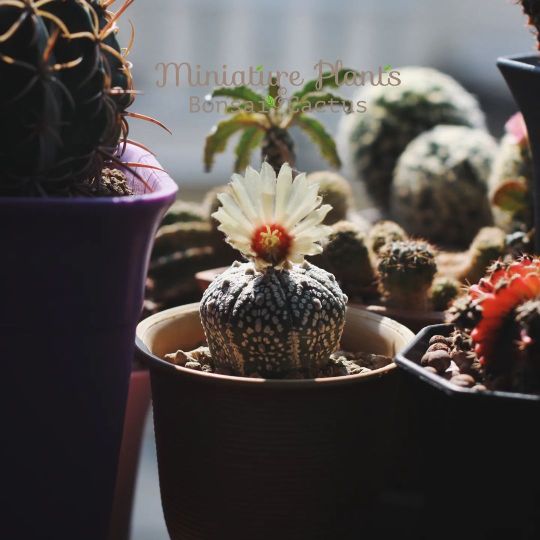
FB: Miniature Plants : Bonsai&Cactus www.facebook.com/miniatureplants LINE: @miniatureplants IG: Miniature_life 2023.02.26 #MiniaturePlantsShop 🌵 #littleLife #coolPlants #Plants #Life #Grow #green #feelGood #caudexPlants #cactus #caudex #gardening #savetheworld #savethegreen #greenlife #succulent #haworthia #naturelover #lobivia #flowers #sansevieriapinguicula #Mammillaria #agave #Euphorbia #Astrophytum #gymnocalycium #cacti #lenta #pachypodium (ที่ Miniature Plants : Bonsai&Cactus) https://www.instagram.com/p/CpIMwV8rHIS/?igshid=NGJjMDIxMWI=
#miniatureplantsshop#littlelife#coolplants#plants#life#grow#green#feelgood#caudexplants#cactus#caudex#gardening#savetheworld#savethegreen#greenlife#succulent#haworthia#naturelover#lobivia#flowers#sansevieriapinguicula#mammillaria#agave#euphorbia#astrophytum#gymnocalycium#cacti#lenta#pachypodium
0 notes
Text
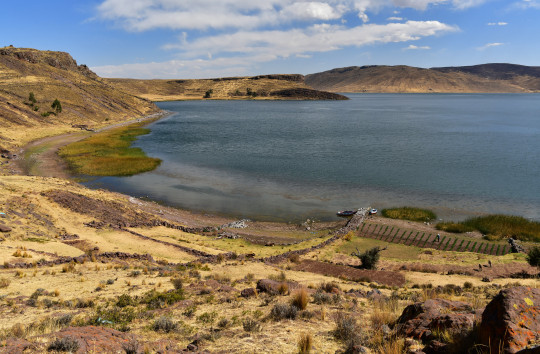

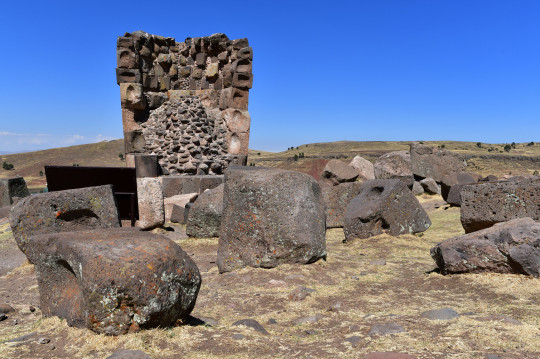
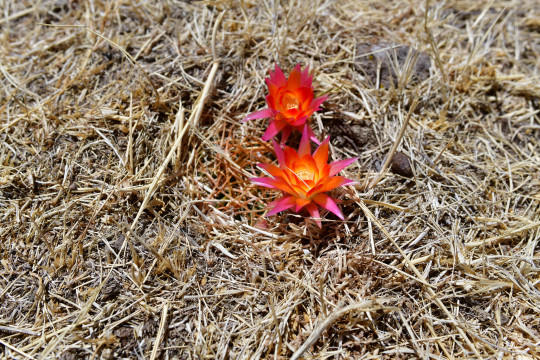
Umayo and Sillustani (2) (3) (4) by Panegyrics of Granovetter
Via Flickr:
(1) Animals graze near a quiet dock below Sillustani.
(2) Sillustani ruins.
(3) Chullpa guts at Sillustani.
(4) Bright flowers in the dead grass at Sillustani.
1 note
·
View note
Text

The metallic looking Eufriesea mariana visiting the flower of Lobivia ancistrophora, Salta, Argentina
126 notes
·
View notes
Text
The ballistic missile hit the Rubymar on the evening of February 18. For months, the cargo ship had been shuttling around the Arabian Sea, uneventfully calling at local ports. But now, taking on water in the bottleneck of the Bab-el-Mandeb Strait, its two dozen crew issued an urgent call for help and prepared to abandon ship.
Over the next two weeks—while the crew were ashore—the “ghost ship” took on a life of its own. Carried by currents and pushed along by the wind, the 171-meter-long, 27-meter-wide Rubymar drifted approximately 30 nautical miles north, where it finally sank—becoming the most high-profile wreckage during a months-long barrage of missiles and drones launched by Iranian-backed Houthi rebels in Yemen. The attacks have upended global shipping.
But the Rubymar wasn’t the only casualty. During its final journey, three internet cables laid on the seafloor in the Bab-el-Mandeb Strait were damaged. The drop in connectivity impacted millions of people, from nearby East Africa to thousands of miles away in Vietnam. It’s believed the ship’s trailing anchor may have broken the cables while it drifted. The Rubymar also took 21,000 metric tons of fertilizer to its watery grave—a potential environmental disaster in waiting.
An analysis from WIRED—based on satellite imagery, interviews with maritime experts, and new internet connectivity data showing the cables went offline within minutes of each other—tracks the last movements of the doomed ship. While our analysis cannot definitively show that the anchor caused the damage to the crucial internet cables—that can only be determined by an upcoming repair mission—multiple experts conclude it is the most likely scenario.
The damage to the internet cables comes when the security of subsea infrastructure—including internet cables and energy pipelines—has catapulted up countries’ priorities. Politicians have become increasingly concerned about the critical infrastructure since the start of the Russia-Ukraine war in February 2022 and a subsequent string of potential sabotage, including the Nord Stream pipeline explosions. As Houthi weapons keep hitting ships in the Red Sea region, there are worries the Rubymar may not be the last shipwreck.
The Rubymar’s official trail goes cold on February 18. At 8 pm local time, reports emerged that a ship in the Bab-el-Mandeb Strait, which is also known as the Gate of Tears or the Gate of Grief, had been attacked. Two anti-ship ballistic missiles were fired from “Iranian-backed Houthi terrorist-controlled areas of Yemen,” US Central Command said. Ninety minutes after the warnings arrived, at around 9:30 pm, the Rubymar broadcast its final location using the automatic identification system (AIS), a GPS-like positioning system used to track ships.
As water started pouring into the hull, engine room, and machinery room, the crew’s distress call was answered by the Lobivia—a nearby container ship—and a US-led coalition warship. By 1:57 am on February 19, the crew was reported safe. That afternoon, the 11 Syrians, six Egyptians, three Indians, and four Filipinos who were on board arrived at the Port of Djibouti. “We do not know the coordinates of Rubymar,” Djibouti’s port authority posted on X.
Satellite images picked up the Rubymar, its path illuminated by an oil slick, two days later, on February 20. Although the crew dropped the ship’s anchor during the rescue, the ship drifted north, further up the strait in the direction of the Red Sea.
For three days, satellite photos show, the vessel largely stayed in place thanks to low winds and weak currents. Then, on February 22, satellite images show peculiar circular wave patterns hitting the ship, as seen in the image below. One former naval intelligence analyst familiar with the images, who asked not to be named for safety reasons, says this could be a sign the anchor may have come loose. One image, they say, appears to show an unidentified object, which could be a small boat, nearby.
Both the wind and currents picked up on February 23, when the ship began drifting for a second time, says Robert Parkington, an intelligence analyst with geospatial analysis firm Geollect. “As wind increases, as current increases, that chance for movement gets so much higher,” says Parkington, who monitored the Rubymar’s movements with data from satellite technology firm Spire Global. “Even a small breeze can have an impact on where the vessel’s moving.”
More than 550 internet cables run along the ocean floors and connect the world. They link continents and economies, beaming everything from Zoom calls to financial transactions every millisecond. Twelve of the cables run through the Bab-el-Mandeb Strait, says Alan Mauldin, research director at telecom research firm TeleGeography. “These cables vary massively in their age, also in their capacities,” Mauldin explains. The region is a crucial, but vulnerable, choke point.
While the Rubymar was drifting, three cables were damaged: the Seacom/Tata cable, a 15,000-kilometer-long wire running the length of East Africa and also connecting it to India; the Asia Africa Europe-1 (AAE-1), which snakes 25,000 kilometers and links Europe to East Asia; and the Europe India Gateway (EIG), made of 15,000 kilometers of cable and joining India with the United Kingdom.
The Seacom cable went down at 9:46 am on February 24, according to new analysis shared exclusively with WIRED by Doug Madory, director of internet analysis at the web monitoring firm Kentik. Five minutes later, at around 9:51 am, the AAE-1 cable dropped offline. Madory says the third damaged cable, EIG, was already mostly offline following a separate fault elsewhere. A telecom industry notice seen by WIRED confirms the three faults and says this was the EIG’s second. The notice says the damage is located around 30 kilometers away from where the cables land in Djibouti and are at depths of around 150 meters.
To determine when the cables lost connectivity, Madory examined internet traffic and routing data from multiple networks. For instance, a network linked to Equity Bank Tanzania, the analysis shows, lost connectivity from the Seacom cable; moments later, it was impacted by the AAE-1 damage. The two clusters of outages impacted countries in East Africa, including Tanzania, Kenya, Uganda, and Mozambique, Madory says. But they also had an impact thousands of miles away in Vietnam, Thailand, and Singapore. “The loss of these submarine cables disrupted internet service for millions of people,” he says. “While service providers in the affected countries have shifted to using the remaining cables, there exists a loss of overall capacity.” The analysis matches when the Seacom cable went offline, says Prenesh Padayachee, the company’s chief digital officer. Both AAE and EIG cables are owned by consortiums of companies, which did not respond to requests for comment.
The telecom industry builds backups into its systems to account for disruptions—and the approach mostly works. When one cable goes offline, traffic is sent via other routes. “Connectivity just went away,” says Thomas King, the chief technology officer of German-based internet exchange DE-CIX, which used the AAE-1 cables. “The issue was detected automatically. Rerouting happens also automatically,” King says. Other firms sent data on different paths around the world.
In the days after damage to the cables first emerged, one unconfirmed press report claimed Houthi rebels could have sabotaged the cables. There has been no public evidence to support this. Farzin Nadimi, a senior fellow at the Washington Institute think tank who has been monitoring the region, says it is most likely that the Rubymar damaged the cables, but Houthi sabotage should not be entirely ruled out, as “highly trained” divers could reach the cables’ depths. Telecom firms have reported fears about Houthi damage to cables, while Houthi spokespeople have repeatedly denied responsibility for the disruptions.
“We don’t even know if the cable is fully broken yet,” Padayachee says. “All we know is that the cable is damaged to a level where we’ve lost comms.” It could have been cut, or even dragged along the seabed and bent so light signals cannot pass through the cable, he says.
Many in the marine and cable industry have turned toward the Rubymar’s drift as the likely cause for the outage. Padayachee says it is the most “plausible” scenario given the ship’s predicted drifting speed. “If you work out the distance between the two cables that roughly relates to the same sort of timeframe as to when one cable will be affected to when the other cable will be affected,” the timing makes sense, he says, adding that the cables are 700 to 1,000 meters apart.
Anchor damage, alongside earthquakes and landslides, is one of the most common ways subsea internet cables are disrupted. For instance, multiple cables in the Red Sea region were damaged by a ship dragging its anchor in 2012. There are also several types of anchor, explain William Coombs and Michael Brown, professors at Durham University and the University of Dundee, respectively, who are researching the dynamics of anchors and how they can damage underwater cables. Some anchors sit on the seabed while others dig into the ground, they say. “If the soil type is not right, and the cable has quite shallow burial or it is on the seabed, you are going to catch it if your anchor starts to drag,” Brown says.
“Considering the timings of when outages were reported, considering the rough location of where those cables are known to be, and considering where we believe to be the location of the Rubymar, I would say that there is a likely possibility that the anchor did cause the damage,” says Parkington of Geollect.
The Rubymar finally sank on March 2. Videos reportedly taken inside the ship, gathered by Saudi state-owned news organization Al Arabiya English, show water gushing into the ship after the missile strike. As the Rubymar took on more water and partially submerged, experts say, its drifting likely slowed and eventually brought it to a complete stop.
While the ship has finished its journey, the three internet cables will remain offline for some time. Padayachee, from Seacom, says that the Yemeni government is likely to approve permits for the company’s repair plans in the next couple of weeks, with repairs to all three damaged cables possibly starting later in April.
Padayachee says that additional security measures are being put in place for the operation, but the repair work itself should be relatively straightforward. The repairs are taking place in water only a couple of hundred meters deep—shallow compared to other cases where cables are more than a mile deep. When the cables are pulled out of the water by the repair crew, it should be possible to say whether the cuts were caused by the anchor or deliberately.
The Rubymar presents one potential final challenge: Padayachee says the location of the cable damage is believed to be around one or two miles away from where the ship sank. “It doesn’t look like it will affect anything in the repair operation,” he says. “It could change by the time they get there: The vessel may have moved or, in fact, the vessel may have broken up and parts of it moved around.” The US Central Command has said the Rubymar also presents a “subsurface impact risk to other ships.”
The Houthi’s missile launches, meanwhile, don’t look like they will stop any time soon. Other ships have been damaged; lives have been lost, and those factors will impact repairs. “It's not something you usually see: trying to have a cable ship into those waters, recover the cable, make a repair, and then be able to return to port. It's a long process. It’s risky,” says Mauldin, from TeleGeography. The risk, for other internet cables, is a repeat of the Rubymar. “It is not out of the question,” Madory concludes in his analysis, “that we could have another vessel, struck by a missile, inadvertently cut another submarine cable.”
16 notes
·
View notes
Photo

among the snows
“Lobivia Caepitosa flowers on Mount Tunari, sometimes among the snows.”
October 1950
Quote taken from original text included with the image in the magazine
0 notes
Text
ميناء الحديدة يستقبل سفينتي حاويات عملاقة
وصلت إلى رصيف ميناء الحديدة، سفينتا حاويات تحملان على متنهما 784 حاوية بضائع تجارية متنوعة. وأوضح مدير محطة الحاويات بمؤسسة موانئ البحر الأحمر اليمنية، القبطان شوقي علي مرشد أن السفينة MARSA VICTORY تحمل على متنها 297حاوية والسفينة LOBIVIA تحمل 487 حاوية وصلتا إلى أرصفة ميناء الحديدة. ونوه القبطان مرشد، بجهود استقبال سفن الحاويات، وآلية عمل […] المشهد اليمني الأول ميناء الحديدة يستقبل سفينتي حاويات عملاقة
0 notes
Text
السفينة LOBIVIA ترسو في محطة عدن للحاويات
New Post has been published on https://tihama24.com/occasions/news188853
السفينة LOBIVIA ترسو في محطة عدن للحاويات
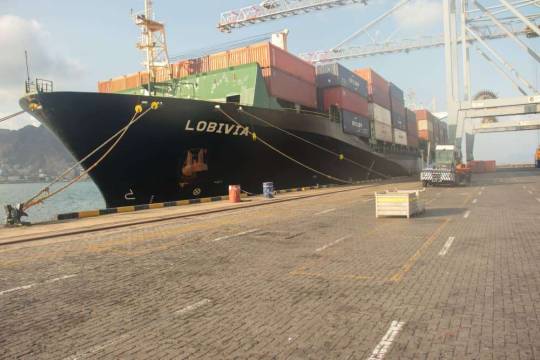
السفينة LOBIVIA ترسو في محطة عدن للحاويات
0 notes
Photo
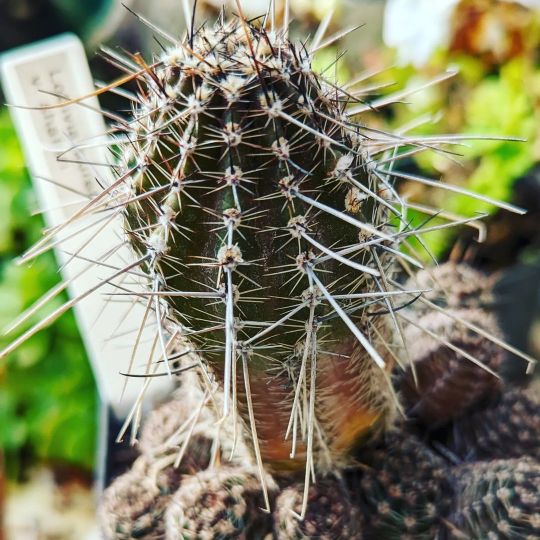
Lobivia (Echinopsis) aurea v. shaferi https://www.instagram.com/p/CkQirKIN1zHZhtQ0Jn9f6Cxzgauhr2ATPrlF9s0/?igshid=NGJjMDIxMWI=
0 notes
Photo

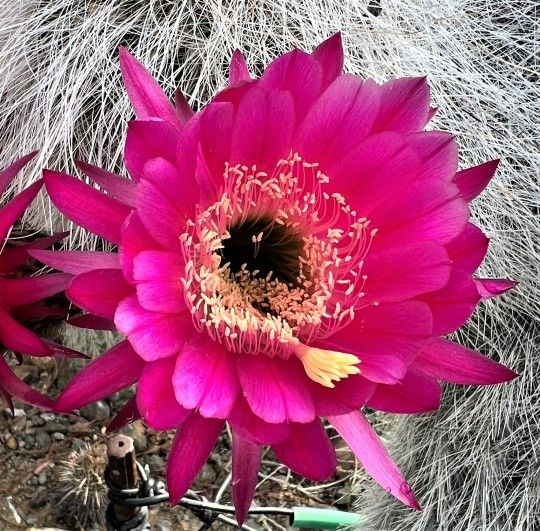
Echinopsis tarijensis
This is yet another example of the confusion surrounding the “Echinopsis complex”. When Trichocereus and Lobivia were taken back out of Echinopsis, there were some species whose placement was in dispute. The plant shown has the columnar growth form of a Trichocereus, and Joel Lode calls it Trichocereus tarijensis. But Walter Rausch suggested that it should actually be seen as a gigantic Lobivia - Lobivia tarijensis. It is hard to know which placement makes more sense, so for the moment I am still calling it Echinopsis tarijensis (using Echinopsis in its broad sense). In any case its very large pink or reddish-pink flowers are wonderful. It comes from the Andes in western Bolivia and northwestern Argentina.
-Brian
47 notes
·
View notes
Video
youtube
So here´s another video from the 2020 season, while I was in the middle of a giant flower flush. The main hybrid in the video is a MEX hybrid between a Lobivia and the Echinopsis hybrid PAPAGENO. Lovely flower, and hopefully a great parent!

1 note
·
View note
Photo

ในที่สู๊ดดดดดด ก็มีดอกกกกก ❤️ ยาวนานกว่าจะโต เกือบ 2ปี ภาพสุดท้ายก่อนซื้อค่ะ หารูปตอนรับมาแล้วไม่มี ขนาดเล็กกว่านิ้วโป้งนินุง ตอนนี้เป็นหนุ่มวัยกำลังห้าว ❤️😁 FB: Miniature Plants : Bonsai&Cactus www.facebook.com/miniatureplants LINE: @miniatureplants IG: Miniature_life 2023.01.19 #MiniaturePlantsShop 🌵 #littleLife #coolPlants #Plants #Life #Grow #green #feelGood #caudexPlants #cactus #caudex #gardening #savetheworld #savethegreen #greenlife #succulent #haworthia #naturelover #lobivia #flowers #sansevieriapinguicula #Mammillaria #agave #Euphorbia #Astrophytum #gymnocalycium #cacti #lenta #pachypodium (ที่ Miniature Plants : Bonsai&Cactus) https://www.instagram.com/p/CnmAAxerq2x/?igshid=NGJjMDIxMWI=
#miniatureplantsshop#littlelife#coolplants#plants#life#grow#green#feelgood#caudexplants#cactus#caudex#gardening#savetheworld#savethegreen#greenlife#succulent#haworthia#naturelover#lobivia#flowers#sansevieriapinguicula#mammillaria#agave#euphorbia#astrophytum#gymnocalycium#cacti#lenta#pachypodium
1 note
·
View note
Text
0 notes
Photo
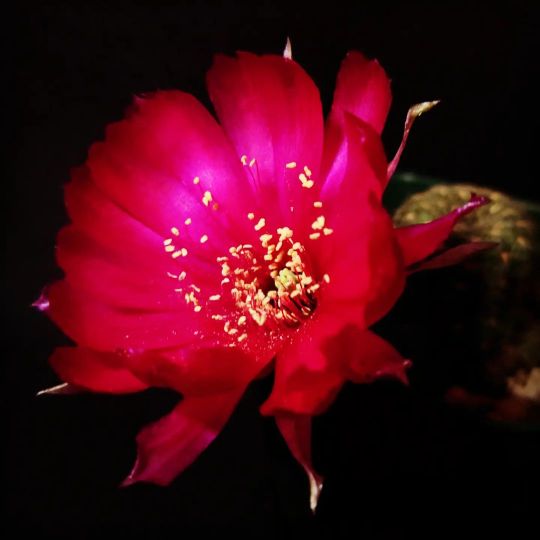
伊豆はまだ大雨には至らず。 本格的な台風はこれからかな。 #ロビビア #メディオロビビア ? 2輪目咲いた。 #花サボテン と言われるだけにおおきくて派手な花。 いきなり咲いてるから油断ならない。 #サボテン #サボテンの花 #多肉植物 #lobivia #mediolobivia #cactus #succulents #flowers #plants https://www.instagram.com/p/CT7_2GNBlI-/?utm_medium=tumblr
1 note
·
View note
Video
粉荷花仙人球的开花过程~ #cactus #bloomingcactus #cactusflower #pink #flower #timelapse #flowertimelapse #lobivia https://www.instagram.com/p/CPm9kvhjlnG/?utm_medium=tumblr
2 notes
·
View notes